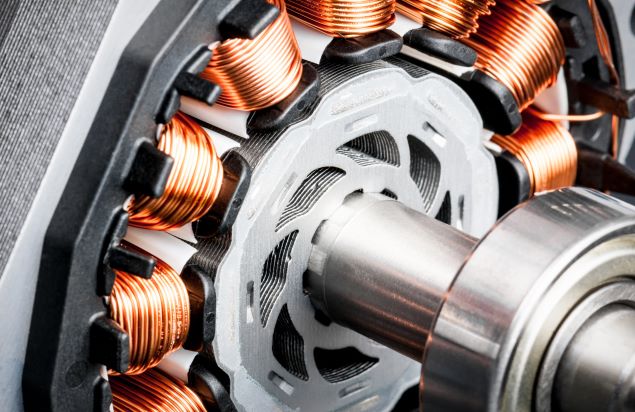Introduction to Magnetism
Magnets are found almost everywhere in our lives. From refrigerator magnets that help hold up calendars, pictures, and grocery lists, to the magnets found in our cars that assist in keeping us safe. But how does it all work? Magnetism is the force that is exerted by magnets and is caused by the motion of electrical charge.
In this article, we’ll talk about the basics of magnetism, what it is, what causes it, and how it appears as an important part of electromechanical systems.
The History of Magnetism
First, let’s get into the history of magnetism and how it appeared in the ancient world. Magnetism was first discovered when people noticed that lodestones, naturally magnetized pieces of the mineral magnetite, could attract iron. The word magnet comes from the Greek term magnētis lithos, or the Magnesian stone, lodestone. A lodestone is a naturally magnetized piece of the mineral magnetite. They are naturally occurring magnets, which can attract iron. Pieces of lodestone were the first magnetic compasses, and their importance to early navigation is indicated by the name lodestone, which in Middle English means "course stone" or "leading stone,” from the word lode, which means "journey” or “way.”
The 11th-century Chinese scientist Shen Kuo was the first person to write about the magnetic needle compass and how it improved the accuracy of navigation by employing the astronomical concept of true north. By the 12th century, the Chinese were known to use the lodestone compass for navigation. They sculpted a directional spoon from lodestone in such a way that the handle of the spoon always pointed south.

Types of Magnetism
There are actually several types of magnetism that appear in different types of materials. Let’s take a look at just a few examples.
Diamagnetism
This appears in all materials. Diamagnetism is the inclination for a material to oppose an applied magnetic field, therefore repelling it. However, in a material with paramagnetic properties (that is, with a tendency to enhance an external magnetic field), the paramagnetic behaviour dominates. Diamagnetic behaviour is observed only in a purely diamagnetic material, such as copper and carbon. In a diamagnetic material, there are no unpaired electrons. One of the most important applications of diamagnetism is with magnetic resonance imaging systems, or MRIs. These machines are crucial to our healthcare system as they offer three dimensional images of internal organs, muscles, and bones. They’re used for disease detection and help physicians when it comes to diagnosing and treating patients.
Paramagnetism
In a paramagnetic material there are unpaired electrons. Paramagnetic substances such as aluminum and oxygen are weakly attracted to an applied magnetic field. While paired electrons have their intrinsic magnetic moments pointing in opposite directions, causing their magnetic fields to cancel out, an unpaired electron is free to align its magnetic moment in any direction. When an external magnetic field is applied, these magnetic moments tend to align themselves in the same direction as the applied field, thus reinforcing them. Paramagnetic substances, like manganese, are also used in relation to MRIs. They’ve been shown to enhance brain imaging, allowing for researchers and doctors to study the different regions of the brain and how they connect.
Ferromagnetism
A ferromagnet has unpaired electrons, however, there’s a want for these magnetic moments to orient parallel to each other in order to maintain a lowered-energy state. Even without an applied field, the magnetic moments of the electrons spontaneously line up parallel to one another. Ferromagnetism only occurs in a few substances, such as iron, nickel, cobalt, and rare-earth metals. Ferromagnetic materials are found in a wide range of devices that we use on an everyday basis, like telephones and speakers. They’re also found in industrial equipment, like electric motors, transformers, and generators.
Magnetism in Practice
Magnetism plays an important role in Electrical and Electronic Engineering because without it components such as relays, solenoids, inductors, chokes, coils, loudspeakers, motors, generators, transformers, and electricity meters would not work! Electromagnetism is the relationship between electricity and magnetism, and it’s the foundation of electric motors, as well as generators and transformers.
Michael Faraday discovered the relationship between magnetic fields and electricity in the 1830s. One of his most important contributions to the field is Faraday's Law of Electromagnetic Induction, which states: “any change to the magnetic environment of a coil of wire (a conductor) will cause a voltage to be induced in the coil. And if the coil is closed, current will flow.”
Basically, as long as there is relative motion between the magnetic field and the coil, a voltage will be induced. “Magnetism is a force, but it has no energy of its own,” says David Cohen-Tanugi, vice president of the MIT Energy Club and a John S. Hennessy Fellow in MIT’s Materials Science and Engineering department. However, “magnetism is extremely useful for converting energy from one form to another. About 99% of the power generated from fossil fuels, nuclear and hydroelectric energy, and wind comes from systems that use magnetism in the conversion process.”
Magnets are employed in almost everything in our world, from generators and motors in hybrid cars to computer hard drives. Researchers are also currently investigating the potential of rare earth magnets, which are strong permanent magnets composed of alloys of rare earth elements. They represent the next generation in magnetism’s role in energy production.
Want to Learn More?
We’ve learned that the definition of magnetism is that it’s the force that is exerted by magnets, caused by the motion of electrical charge. Magnetism is a huge part of electromechanical systems and our everyday electronics. It’s a fascinating field of study that enables us to learn more about how our world works.
If you’re drawn to the study of magnetism and want to advance your career, consider applying for our Electromechanical Technician program.
Comments
This really helped me with…
Submitted by Anonymous (not verified) on Tue, 09/24/2024 - 13:09
This really helped me with my project about magnetism. Thank you very much.

good notes